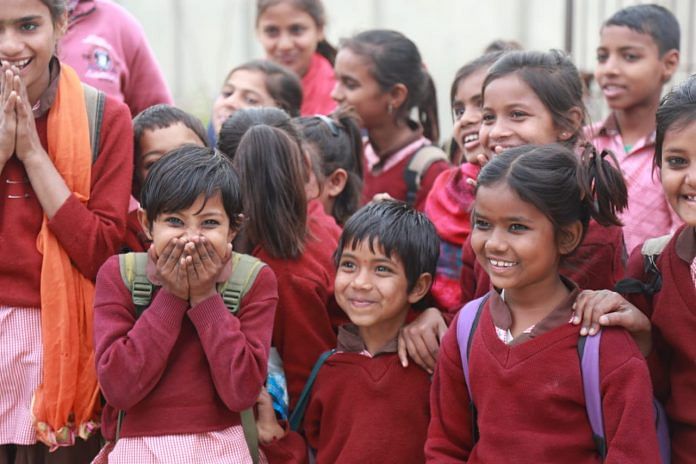More than a third of girls in South Asia miss school during their periods, often because they lack access to menstrual health products and receive little or no education about menstruation before reaching puberty.
Let me take India as an example: out of all the menstruating girls and women in India, less than 20% use sanitary pads. Even in urban areas, this only rises to about 50%. When we started our journey in India three decades ago as a leading brand in menstrual hygiene, the number of women using sanitary protection was less than 10 million – a fraction of the country’s female population. Our efforts have been instrumental in increasing this number to more than 70 million women today.
The barriers to adopting menstrual hygiene practices are three-fold: a lack of awareness, a lack of acceptance and a lack of access.
A lack of awareness leads to girls having no prior information about periods before they experience them for the first time. Studies indicate that 71% of adolescent girls remain unaware of menstruation until their first menstrual cycle. Also, owing to a lack of awareness, they do not prioritize it as an essential health need. Even when we talk about affordability, the big question is about relevance – mothers and daughters think that a sanitary pad is a good-to-have rather than a necessity. As a result, household spending on essential menstrual hygiene is just a small fraction of what is spent on other items, such as cosmetics.
A lack of acceptance leads to the term period being negative for women, associated with fear, anxiety and embarrassment. Add to that the widely prevalent taboos that force women to stay indoors, skip school, be relegated to a certain part of the house (sometimes even outside her house) and not allowed to enter a kitchen or temple. The lack of acceptance means most women want to keep their period a secret, which results in them not using sanitary hygiene products and missing school as a way to manage menstruation.
A lack of access to quality hygiene products continues to be a barrier to achieving 100% coverage for menstrual hygiene. Studies indicate that most girls do not have consistent access to good-quality menstrual hygiene products with 88% of women and girls in India using homemade alternatives, such as old cloth, rags, hay, sand or ash. In addition, women and girls lack access to appropriate sanitation facilities.
Also read: One-rupee sanitary pads welcome, but govt’s Janaushadhi stores often don’t have them
How can we put an end to these barriers to ensure that all girls and women have access to menstrual hygiene? The answer lies in multi-stakeholder partnerships. Governments, corporates, non-governmental organizations (NGOs) and the media and entertainment industry must collaborate and take advantage of each other’s scale, capability and influence to achieve this vision. We have compelling examples from India, where the conversation around periods has picked up in recent years.
1. Governments play a unique role, as they have efficiencies of scale within the system. It is heartening to see the Indian government, for example, calling out menstrual hygiene as a priority. Governments have the most extensive reach and improving acceptance and access through their machinery can create a mass-scale impact. The health system and educational institutions are crucial to driving change. An example of this is Procter & Gamble’s partnership with the Goa Government in India to introduce an educational module on menstrual hygiene management as part of the Education in Government Schools curriculum. More government bodies should take up such initiatives to drive change.
2. Corporates and brands have the power of advertising and a media voice that have the potential to shape society. They must use this voice responsibly to break the societal taboos that exist today. An excellent example of this is the widely acclaimed Touch the Pickle campaign from P&G. In 2014, it was one of the first campaigns in which any brand or institution in India took on the taboos surrounding periods on a mass scale. The campaign not only sparked conversations on period taboos but also drove acceptance of these conversations.
3. NGOs and individual change-makers have a critical role to play in mobilizing communities and creating change at a grassroots level. There are communities in South Asia that do not have access to mass media and technology; we must reach them and bring about a change of habit in these communities.
4. The entertainment and media industry has always influenced society and can be a catalyst in the adoption of menstrual hygiene in the country. With Padman and, more recently, the Oscar-winning documentary Period. End of Sentence, I hope this conversation only gets stronger from here.
The biggest win will come when all stakeholders work together, using their unique strengths towards a common vision that finally puts an end to menstrual taboos.
This article was originally published on the World Economic Forum.
Also read: Apple has a menstruation emoji now, and here’s why it matters



